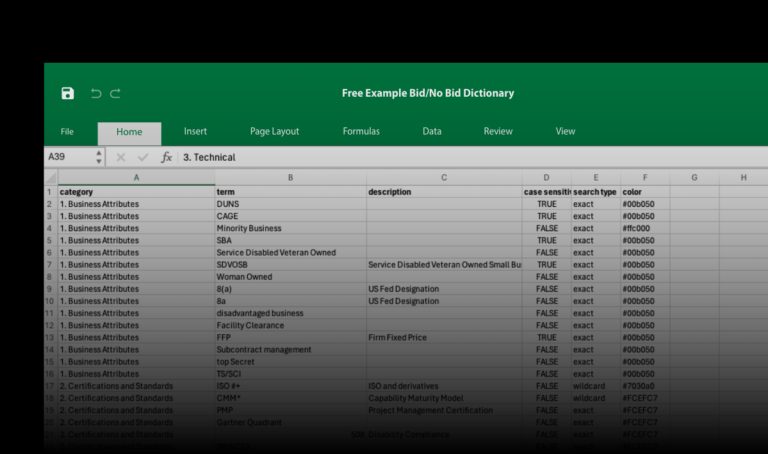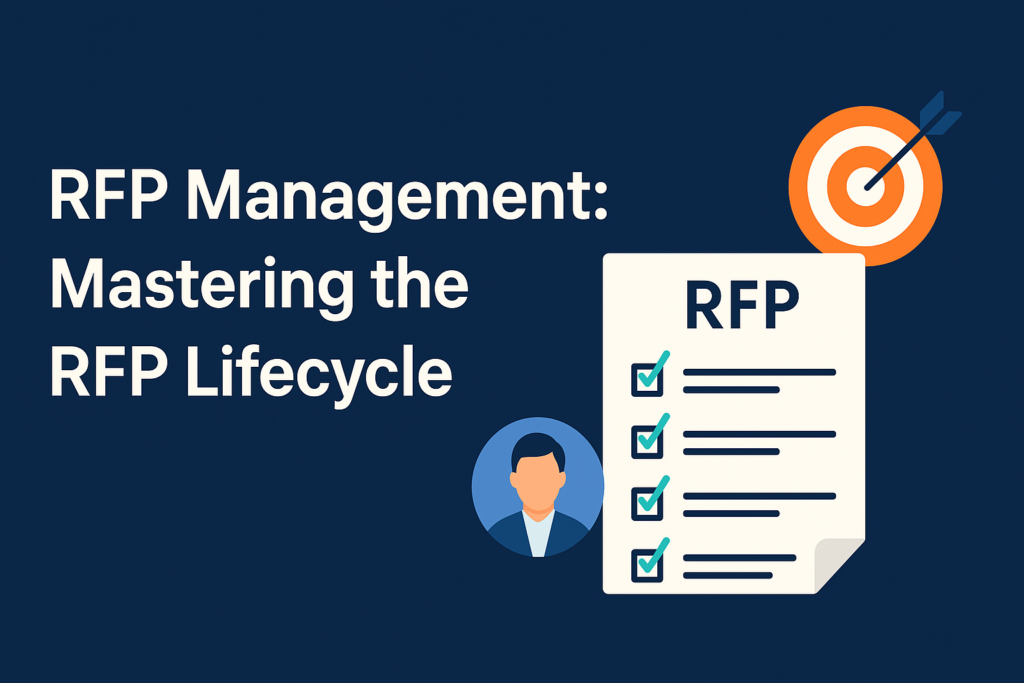This dictionary is an example of how you can use dictionaries in VT Docs to improve the bid/no bid decision-making process. Using our example terms, this bid/no-bid dictionary will evaluate documents for key aspects that an organization should emphasize or avoid. It serves a dual purpose in assessing document content, helping to identify elements that align with strategic goals and those that pose potential risks. It can also help determine whether to concentrate on certain areas or avoid them making it invaluable in guiding decision-making.
Overview of This Example Dictionary
- Business Attributes: This category of terms will help identify the types of businesses that align with opportunities detailed in documents like RFPs and SOWs. If a document mentions attributes that match your business type, such as “small business,” it signals a viable opportunity for bidding.
- Certifications & Standards: This category of terms will help to catalog all certifications and standards your organization has achieved. This feature helps determine if your qualifications are cited as requirements or preferences in opportunity documents. This provides a competitive edge in the bidding process.
- Technical Capabilities: This category of terms will help list technical skills and expertise your organization excels in. This process enables quick identification of matches. It aligns your technical strengths with the technical requirements in bidding documents. This positions you well for successful bids.
- No-Bid Factors: This category of terms will help flag capabilities or project aspects that your organization cannot fulfill or that represent high risks. If these factors appear in a document, the dictionary aids in decision-making. It helps decide against bidding, which saves time and directs efforts toward more suitable opportunities.
5 Ways You Can Use This Dictionary in Your Bid/No Bid Process?
Making bid/no bid decisions is a critical aspect of business development and proposal management, particularly in the GovCon space. So how can you use a bid/no bid dictionary?
- Strategic Decision-Making: The bid/no bid dictionary offers clear guidance in two areas. It aids in the strategic allocation of resources and determines if opportunities align with an organization’s capabilities and goals. This streamlines the decision-making process.
- Risk Management: The dictionary functions by evaluating key terms and requirements against established criteria. This helps assess the feasibility and profitability of potential contracts. Consequently, it mitigates risks associated with unsuccessful bids and ensures optimal resource utilization.
- Competitive Advantage: Our dictionary enables organizations to quickly identify opportunities where they have a distinct advantage. This will make bid decisions more informed and enhance overall competitiveness.
- Resource Optimization: Using our dictionary to identify no-bid factors early helps avoid the pursuit of unsuitable opportunities. This conserves resources and allows for effective utilization in pursuing viable prospects.
- Long-Term Sustainability: The dictionary facilitates more discerning bid/no bid decisions that align with strategic objectives. This contributes to the sustainable growth and success of the organization. It also helps prioritize the right opportunities for long-term viability.
This free example dictionary, when customized with your unique terms, will help you beyond mere word tracking; it can be an essential asset for any GovCon professional. By providing a detailed overview of your organization’s business attributes, certifications, technical expertise, and known no-bid factors, it can ensure resource optimization and boost your competitive advantage. Avoid the drain of pursuing unsuitable opportunities and focus your efforts on bids where your organization can truly shine.
What are Dictionaries?
Unlock the power of dictionaries and revolutionize your document analysis with VT Docs. If you analyze, generate, or review strategic content, dictionaries are your secret weapon for precision and efficiency. Dictionaries are easy to create and are a powerful tool for identifying specific terms in documents. They can also be used to track concepts and align key customer language with your own.
You can use dictionaries to highlight risky terms, track contractual requirements and assign functional responsibility. They also help in creating compliance matrices, tee up redlines and bring order to the chaos of complex documents.
Watch the video above to find out more about dictionaries and sign up to VT University to learn how you can use them.
We offer a series of example dictionaries for you to use for free, you can access our Dictionaries Marketplace here.






